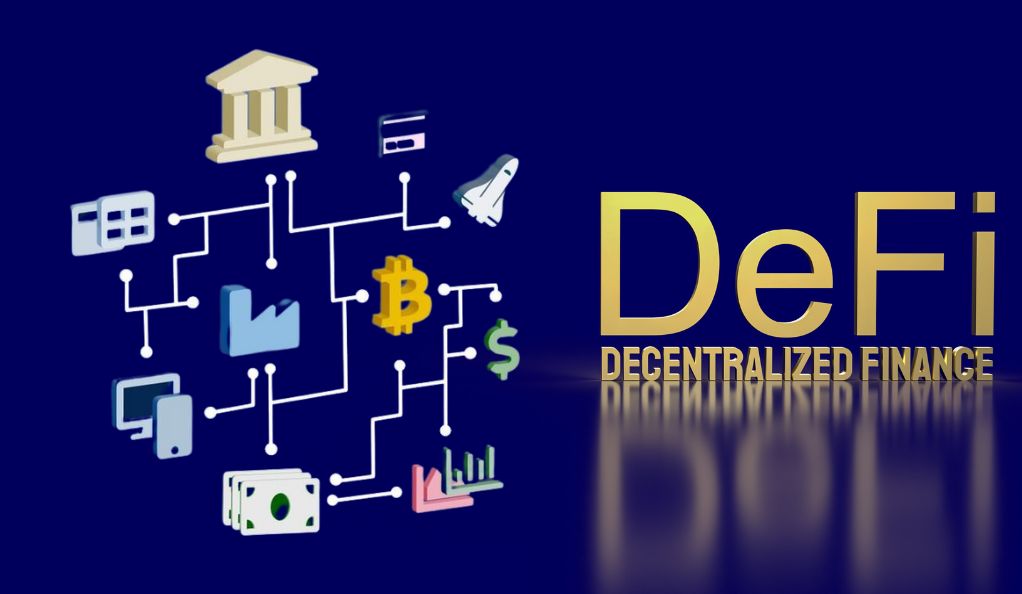The Evolution of Crypto Tools & Software

The world of finance and technology has been revolutionized by the advent of cryptocurrencies. This digital or virtual form of currency, built on cryptographic techniques and decentralized networks, has not only challenged traditional financial systems but has also opened up a plethora of opportunities for innovation, investment, and growth. This section delves deep into the cryptocurrency landscape, providing a comprehensive overview of its significance and the profound impact it has had on society.

The Genesis of Cryptocurrency
Cryptocurrency, as a concept, was born out of the need for a decentralized, transparent, and secure system of monetary transactions. Traditional financial systems, with centralized banks and intermediaries, often lacked transparency and were susceptible to manipulations. The 2008 financial crisis further underscored the vulnerabilities inherent in the system. It was in this backdrop that the idea of a decentralized currency took root.
In 2009, an individual or group under the pseudonym Satoshi Nakamoto introduced Bitcoin, the first decentralized cryptocurrency. Unlike traditional currencies, Bitcoin was not controlled by any central authority or government. Instead, it operated on a decentralized network of computers, using blockchain technology to record and verify transactions.
Blockchain: The Backbone of Cryptocurrency
| Feature | Traditional Banking System | Blockchain Technology |
|---|---|---|
| Centralization | Centralized with banks and intermediaries | Decentralized with a distributed ledger |
| Transparency | Limited; often opaque | High; every transaction is recorded |
| Security | Vulnerable to hacks and frauds | Highly secure due to cryptographic techniques |
| Speed | Can be slow due to intermediaries | Faster peer-to-peer transactions |
| Costs | High transaction fees | Lower or no transaction fees |
Blockchain technology is the foundation upon which cryptocurrencies are built. It is a distributed ledger that records all transactions across a network of computers. Every transaction is grouped into a block, and these blocks are linked together in a chronological order, forming a chain. This structure ensures that once a transaction is added to the blockchain, it cannot be altered or deleted, ensuring transparency and security.
The Societal Impact of Cryptocurrency
The rise of cryptocurrencies has had profound societal implications:
- Financial Inclusion: Cryptocurrencies have provided financial services to those without access to traditional banking systems, especially in developing countries.
- Transparency and Trust: With every transaction being recorded on a public ledger, the level of transparency offered by cryptocurrencies is unparalleled. This has led to increased trust, especially in countries with unstable financial systems.
- Innovation and Growth: The decentralized nature of cryptocurrencies has spurred innovation, leading to the development of new financial products, services, and platforms.
- Challenges: While cryptocurrencies offer numerous benefits, they also come with challenges. Issues like price volatility, regulatory concerns, and the potential for misuse have been areas of concern.
The Birth of Bitcoin: A Revolutionary Idea
The inception of Bitcoin marked a paradigm shift in the financial world. It wasn’t just the introduction of a new form of currency; it was the embodiment of a radical idea that challenged the very foundations of traditional financial systems.

Satoshi Nakamoto: The Enigma Behind Bitcoin
In 2008, a whitepaper titled “Bitcoin: A Peer-to-Peer Electronic Cash System” was released by an individual or group using the pseudonym Satoshi Nakamoto. This paper laid out the conceptual framework for Bitcoin, proposing a system where transactions could be made without the need for intermediaries, such as banks. The identity of Satoshi remains one of the greatest mysteries in the crypto world, with numerous theories and speculations but no concrete evidence.
Bitcoin’s Mechanism: How It Works
At its core, Bitcoin operates on a decentralized network of computers, known as nodes. These nodes validate and record transactions on a public ledger called the blockchain. Here’s a simplified breakdown:
- Transaction Initiation: A user initiates a Bitcoin transaction, sending a certain amount to another user.
- Verification: This transaction is broadcasted to the network and picked up by nodes. Nodes verify the transaction using cryptographic techniques.
- Mining: Once verified, the transaction is added to a block. Miners solve complex mathematical problems to add this block to the blockchain.
- Consensus: Once the majority of nodes in the network agree that the block is valid, it’s added to the blockchain.
- Completion: The transaction is now complete, and the recipient receives the Bitcoin.
Bitcoin’s Rise to Prominence
Bitcoin’s journey from its inception to its current status as the leading cryptocurrency has been tumultuous, marked by highs, lows, and intense media scrutiny. Here’s a brief timeline:
- 2009: Bitcoin’s software is made public, allowing people to mine and transact using Bitcoin.
- 2010: The first known commercial transaction using Bitcoin takes place when a programmer buys two pizzas for 10,000 Bitcoins.
- 2013: Bitcoin surpasses the $1,000 mark for the first time.
- 2017: Bitcoin reaches an all-time high of nearly $20,000, drawing global attention.
- 2020-2021: Amidst global economic uncertainties and increased institutional interest, Bitcoin’s price sees unprecedented highs, solidifying its position as a legitimate asset class.
Market Capitalization: Bitcoin’s Dominance
Bitcoin’s market capitalization, which represents the total value of all Bitcoins in circulation, has seen exponential growth over the years. Its dominance in the cryptocurrency market has been a testament to its acceptance and trust among investors and the general public. While other cryptocurrencies have emerged, Bitcoin remains the gold standard, often referred to as “digital gold.”
The Proliferation of Cryptocurrencies: Beyond Bitcoin
While Bitcoin blazed the trail, it was just the beginning of a much larger movement. The success and potential of Bitcoin inspired a wave of innovation, leading to the creation of numerous other cryptocurrencies, each with its unique features, use cases, and value propositions.
Altcoins: The Alternatives to Bitcoin

“Altcoin” is a term used to describe any cryptocurrency other than Bitcoin. These alternative cryptocurrencies emerged to address perceived limitations of Bitcoin or to offer new functionalities. Some of the most notable altcoins include:
- Ethereum (ETH): Introduced in 2015, Ethereum is more than just a cryptocurrency. It provides a platform for creating decentralized applications (DApps) using smart contracts, self-executing contracts with the terms of the agreement directly written into code.
- Ripple (XRP): Designed primarily for large financial institutions, Ripple offers a digital payment protocol more than a cryptocurrency. It facilitates real-time, cross-border payments with lower fees.
- Litecoin (LTC): Often referred to as the silver to Bitcoin’s gold, Litecoin offers faster transaction times and a different hashing algorithm.
- Cardano, Polkadot, Chainlink: These are examples of newer generation cryptocurrencies, each with its distinct approach to scalability, interoperability, and security in the decentralized world.
Forking: Creating New from the Old
A significant phenomenon in the crypto world is “forking.” A fork occurs when there’s a divergence in the blockchain, leading to two potential paths forward. This can result in the creation of a new cryptocurrency. Forks can be:
- Soft Fork: A backward-compatible method where only previously valid transactions are made invalid. The old nodes will recognize the new blocks as valid.
- Hard Fork: A non-backward-compatible way that makes previously valid transactions invalid (or vice-versa). This creates a permanent divergence from the original version.
Examples of cryptocurrencies resulting from forks include Bitcoin Cash (from Bitcoin) and Ethereum Classic (from Ethereum).
The Diversity of Cryptocurrencies
The cryptocurrency landscape is vast and varied. Beyond the primary purpose of being a medium of exchange, different cryptocurrencies serve different purposes:
- Stablecoins: These are cryptocurrencies pegged to a stable asset, like the US Dollar. Examples include Tether (USDT) and USD Coin (USDC). They aim to offer the benefits of digital currency without the typical volatility.
- Privacy Coins: Cryptocurrencies like Monero and Zcash that offer enhanced anonymity and privacy features.
- Utility Tokens: These are tokens that are used within a particular blockchain ecosystem. They are not meant to be investments but serve a specific function, like granting access to a service.
The Global Acceptance and Regulation
As the number of cryptocurrencies grew, so did their acceptance. Today, cryptocurrencies are not just niche assets for tech enthusiasts. They are being integrated into mainstream financial systems, with businesses, both big and small, accepting crypto payments. However, this rapid growth has also led to regulatory challenges. Different countries have varying stances, from embracing cryptocurrencies to imposing strict bans.
Decentralized Finance (DeFi): The Financial Revolution
Decentralized Finance, commonly known as DeFi, represents a seismic shift in the way we approach traditional financial systems. It aims to recreate and improve upon conventional financial instruments in a decentralized, open-source, and permissionless environment. Built primarily on the Ethereum blockchain, DeFi platforms and applications are setting the stage for a more inclusive and efficient financial ecosystem.

Understanding DeFi: The Basics
At its core, DeFi leverages blockchain technology to eliminate intermediaries like banks, brokers, and exchanges. Instead, transactions occur directly between users through smart contracts. These are self-executing contracts with the terms of the agreement directly written into lines of code.
Key Components of DeFi
- Lending Platforms: Platforms like Compound and Aave allow users to lend or borrow funds without intermediaries, earning interest or paying fees directly through the platform.
- Decentralized Exchanges (DEXs): Unlike traditional exchanges, DEXs like Uniswap or Sushiswap allow peer-to-peer trades, reducing fees and increasing security.
- Stablecoins: As discussed earlier, these are cryptocurrencies pegged to stable assets. They play a crucial role in DeFi by providing a stable medium of exchange in a volatile market.
- Yield Farming: A strategy where users “farm” rewards by lending or staking their crypto assets in a DeFi platform.
- Liquidity Pools: Collections of funds locked in a smart contract. They are used to facilitate trading by providing liquidity and are often used in DEXs.
The Potential and Promise of DeFi
- Financial Inclusion: DeFi platforms are accessible to anyone with an internet connection, providing financial services to those underserved by traditional systems.
- Transparency and Security: All transactions are recorded on the blockchain, ensuring transparency. Moreover, the decentralized nature reduces the risk of hacks and fraud.
- Interoperability: DeFi platforms and applications are designed to work together, creating a connected and integrated financial ecosystem.
- Flexibility and Innovation: Without the constraints of traditional systems, DeFi platforms can quickly adapt and innovate, offering new and improved financial products.
Challenges Facing DeFi
While DeFi holds immense promise, it’s not without its challenges:
- Smart Contract Vulnerabilities: Being code-based, smart contracts can have bugs or vulnerabilities that can be exploited.
- High Gas Fees: Particularly on the Ethereum network, transaction fees can be prohibitively high during peak times.
- Regulatory Uncertainty: The decentralized nature of DeFi poses challenges for regulators, leading to potential legal uncertainties.
- Complexity: For the average user, DeFi platforms can be complex and intimidating, posing a barrier to entry.
Modeling the Cryptocurrency Ecosystem: Predicting the Future
The cryptocurrency market, with its rapid growth and dynamic nature, has attracted significant attention from economists, data scientists, and financial analysts. Modeling the cryptocurrency ecosystem involves understanding the underlying patterns, behaviors, and potential future trajectories of various digital assets. This section delves into the application of mathematical and statistical models to predict the future dominance of Bitcoin and other top cryptocurrencies.
Zipf’s Law and the Cryptocurrency Market
Zipf’s Law, a principle related to the distribution of resources, has been observed in various phenomena, from city populations to website rankings. When applied to the cryptocurrency market, Zipf’s Law suggests that the distribution of market capitalization among cryptocurrencies follows a predictable pattern.
For instance, the largest cryptocurrency (Bitcoin) might have twice the market cap of the second-largest, three times that of the third-largest, and so on. This pattern, if consistently observed, can provide insights into the potential stability or volatility of the market.
Heaps’ Law and Cryptocurrency Growth
Heaps’ Law is another mathematical principle that has found relevance in the crypto world. It relates to the growth of new elements in a system as it expands. In the context of cryptocurrencies, it can be used to predict the growth rate of new cryptocurrencies entering the market.
By analyzing the historical data of cryptocurrency emergence against the backdrop of Heaps’ Law, analysts can forecast the potential saturation point of the market, indicating when the introduction of new cryptocurrencies might plateau.
Predictive Analytics and Machine Learning
With the vast amount of data generated by cryptocurrency transactions, machine learning and predictive analytics have become invaluable tools. Algorithms can be trained to recognize patterns, analyze market sentiments, and even predict price movements based on historical data.
Platforms like Augur even allow for decentralized prediction markets, harnessing the collective intelligence of the masses to forecast future events, including cryptocurrency behaviors.
Challenges in Modeling the Cryptocurrency Ecosystem
While mathematical models and predictive analytics offer valuable insights, the cryptocurrency market’s inherent volatility poses challenges:
- External Factors: Geopolitical events, regulatory changes, and macroeconomic factors can significantly influence cryptocurrency prices, making predictions challenging.
- Technological Advancements: Rapid technological innovations can disrupt existing models. For instance, the advent of quantum computing could potentially impact cryptographic security measures.
- Market Manipulation: The crypto market, especially smaller coins, can be susceptible to “pump and dump” schemes, artificially inflating prices and defying predictive models.
Innovation in the Cryptocurrency World: The Adjacent Possible
The cryptocurrency ecosystem is a hotbed of innovation, with new technologies, platforms, and solutions emerging at a rapid pace. One concept that aptly describes this continuous evolution is the “adjacent possible,” a term coined by biologist Stuart Kauffman and popularized by Steven Johnson in his book “Where Good Ideas Come From.”

The Adjacent Possible: A Conceptual Overview
The adjacent possible refers to the range of possibilities that open up with each new innovation. In essence, every new discovery or invention creates a new set of potential adjacent discoveries. In the context of cryptocurrencies, each technological breakthrough or conceptual innovation expands the boundaries of what’s possible, leading to a cascade of subsequent innovations.
Open-Source Nature: The Catalyst for Innovation
One of the primary reasons for the rapid innovation in the crypto world is its open-source ethos. Most blockchain projects and platforms are open-source, meaning their underlying code is publicly available. This transparency:
- Facilitates Collaboration: Developers from around the world can contribute, refine, and build upon existing projects.
- Ensures Security: The public nature of the code allows for continuous peer reviews, ensuring vulnerabilities are identified and addressed.
- Spurs Forking and New Projects: As seen with Bitcoin’s numerous forks, open-source projects can be taken in new directions, leading to the birth of entirely new cryptocurrencies or platforms.
Notable Innovations in the Cryptocurrency Space
- Smart Contracts: Pioneered by Ethereum, these self-executing contracts have the potential to automate and revolutionize various industries, from finance to supply chain management.
- Layer 2 Solutions: With scalability being a challenge for many blockchains, solutions like the Lightning Network for Bitcoin and the Plasma framework for Ethereum represent significant innovations to handle more transactions efficiently.
- Decentralized Autonomous Organizations (DAOs): These are organizations governed by rules encoded in smart contracts. They operate without centralized control, representing a new paradigm in organizational structure.
- Non-Fungible Tokens (NFTs): These unique digital assets represent ownership of a specific item or piece of content on the blockchain. They’ve opened up new possibilities in art, gaming, and collectibles.
The Role of Community and Collaboration
Innovation in the crypto space isn’t just driven by technology; it’s propelled by vibrant communities of developers, enthusiasts, and visionaries. Platforms like GitHub, forums, and even social media play a crucial role in fostering collaboration, brainstorming, and the exchange of ideas.
Challenges and Criticisms: Navigating the Complexities of the Crypto World
While the cryptocurrency ecosystem has been a beacon of innovation and has presented numerous opportunities, it has not been without its share of challenges and criticisms. From concerns about its environmental impact to debates about its real-world utility, the crypto world has faced its fair share of scrutiny.
High Price Volatility: The Double-Edged Sword
One of the most prominent criticisms of cryptocurrencies, especially Bitcoin, is their high price volatility. While this volatility has led to significant gains for many investors, it has also resulted in substantial losses, leading to concerns about its stability as a store of value.
- Speculative Nature: Many argue that a significant portion of cryptocurrency’s value is driven by speculation rather than intrinsic value.
- Market Manipulation: The relatively unregulated nature of the crypto market has led to concerns about “whale” investors manipulating prices.
Environmental Concerns: The Energy Debate
The energy consumption of cryptocurrency mining, particularly Bitcoin, has been a hot topic of debate.
- Proof of Work (PoW): Cryptocurrencies like Bitcoin use PoW consensus mechanisms, which require miners to solve complex mathematical problems, consuming vast amounts of energy.
- Carbon Footprint: The energy-intensive nature of PoW mining has led to concerns about its carbon footprint and environmental impact.
However, it’s worth noting that the crypto community is actively exploring more energy-efficient consensus mechanisms, such as Proof of Stake (PoS).
Regulatory and Legal Challenges
The decentralized nature of cryptocurrencies poses unique challenges for regulators:
- Taxation: How should cryptocurrency gains be taxed? Different jurisdictions have different approaches, leading to complexities for investors.
- Legal Status: While some countries have embraced cryptocurrencies, others have banned or restricted their use.
- Consumer Protection: The lack of regulation has led to numerous scams and fraudulent schemes, raising concerns about consumer protection.
Transaction Validation Times and Scalability
As the number of cryptocurrency transactions has grown, so have the transaction validation times, especially on networks like Bitcoin and Ethereum. This has raised concerns about the scalability of these networks and their ability to handle global transaction volumes.
Real-World Utility: Is It Just Digital Gold?
While cryptocurrencies were initially envisioned as decentralized digital currencies, their real-world utility as a medium of exchange has been debated. Many argue that cryptocurrencies, especially Bitcoin, act more as a store of value (like gold) rather than a currency for daily transactions.
The Future of Cryptocurrency Tools & Software: Charting the Path Ahead
The cryptocurrency landscape, having evolved dramatically over the past decade, stands at a pivotal juncture. With the foundation laid by trailblazers like Bitcoin and the subsequent wave of innovations, the future promises even more transformative developments. This section delves into the anticipated trajectory of cryptocurrency tools and software, exploring the innovations on the horizon and their potential implications.
Integration with Traditional Financial Systems
While cryptocurrencies began as an alternative to traditional financial systems, the future likely holds a more integrated approach:
- Banking Collaborations: Major banks are already exploring blockchain technology for various applications, from cross-border payments to fraud prevention.
- Institutional Investment: The increasing interest of institutional investors in cryptocurrencies signals a shift towards mainstream acceptance and integration.
- Crypto Payment Gateways: More businesses, both online and offline, are expected to accept cryptocurrency payments, facilitated by seamless payment gateways.
Advancements in Blockchain Technology
The underlying technology of cryptocurrencies, blockchain, is set to undergo significant advancements:
- Sharding & Layer 2 Solutions: To address scalability issues, techniques like sharding (dividing the blockchain into smaller segments) and Layer 2 solutions (off-chain transactions) will gain prominence.
- Interoperability: The future will see blockchains communicating and interacting seamlessly, enabling a more connected and integrated crypto ecosystem.
- Enhanced Privacy Protocols: With growing concerns about privacy, new protocols and technologies will emerge to ensure transactional privacy and data protection.
Decentralized Applications (DApps) and Web 3.0
The next iteration of the internet, often termed Web 3.0, will be characterized by decentralized applications (DApps):
- Decentralized Social Media: Platforms where users have control over their data and monetize their content without intermediaries.
- Decentralized Marketplaces: Peer-to-peer platforms for goods and services, eliminating middlemen and reducing costs.
- Decentralized Finance (DeFi) Expansion: Beyond the current offerings, DeFi will expand to replicate and improve upon all traditional financial instruments.
Regulatory Clarity and Global Standards
As the crypto ecosystem matures, clearer regulatory frameworks will emerge:
- Global Standards: Collaborative efforts will lead to the establishment of global standards for cryptocurrency regulation, ensuring consistency and fostering global adoption.
- Consumer Protection Protocols: Enhanced regulations will focus on protecting consumers from scams, frauds, and market manipulations.
Sustainability and Green Cryptocurrencies
Addressing environmental concerns will be paramount:
- Transition to Proof of Stake (PoS): More cryptocurrencies will transition from energy-intensive Proof of Work (PoW) to more sustainable consensus mechanisms like PoS.
- Carbon-neutral Mining: Initiatives to offset the carbon footprint of cryptocurrency mining will gain traction, with miners transitioning to renewable energy sources.
Conclusion
The journey of cryptocurrencies and their underlying technologies represents more than just a financial evolution; it symbolizes a global paradigm shift. From Bitcoin’s revolutionary inception to the multifaceted landscape of DeFi, blockchain, and beyond, the crypto world has consistently challenged traditional norms, offering a glimpse into a future where decentralization, transparency, and innovation reign supreme. As we stand at the cusp of this new era, it’s imperative to recognize the transformative potential of cryptocurrencies, not just as digital assets, but as harbingers of a more inclusive and equitable financial ecosystem.
Yet, like any transformative journey, the path of cryptocurrencies is paved with challenges, criticisms, and uncertainties. From addressing environmental concerns to navigating regulatory complexities, the crypto community must approach these hurdles with resilience, collaboration, and a commitment to continuous learning. It’s through these collective efforts that the true potential of cryptocurrencies will be realized, ensuring that the benefits of this digital revolution are accessible to all, irrespective of geographical, economic, or social boundaries.
In retrospect, the story of cryptocurrencies is one of relentless pursuit, innovation, and a vision for a better future. As we delve deeper into the intricacies of crypto tools and software, we are not just exploring technological advancements; we are charting the course for a new financial epoch. An epoch where trust is algorithmically ensured, intermediaries are a choice rather than a necessity, and the power of finance is redistributed to the hands of the many. The crypto renaissance is upon us, and its reverberations promise to shape the very fabric of our global society.
Bitcoin-up is dedicated to providing fair and trustworthy information on topics such as cryptocurrency, finance, trading, and stocks. It's important to note that we do not have the capacity to provide financial advice, and we strongly encourage users to engage in their own thorough research.
Read More